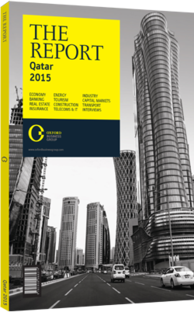New logistics facilities being built in Qatar
With billions invested in new transportation infrastructure and a host of mega-projects necessitating huge movements of goods and people, Qatar’s logistics sector is growing rapidly. The sector is expected to maintain a strong upward trajectory in the coming years as the state recently established new warehousing and logistics facilities for a growing portfolio of businesses, including small and medium-sized enterprises (SMEs). An in-depth Arabian Business report from September 2013 identified lack of supporting warehouse infrastructure as one of the most serious shortcomings in Qatar’s transport and logistics sector, with industry leaders stressing that development of warehousing zones is critical for overall transport and trade growth.
IT TAKES A VILLAGE: The logistics industry is moving quickly to meet demand, with the recently established Logistics Village Qatar (LVQ) offering much-needed facilities for the segment, with its parent company, the Gulf Warehousing Company (GWC), reporting strong growth of late. GCW has a majority stake in seven logistics firms in Qatar, the UAE, Saudi Arabia and Nigeria, and its Qatari assets include LVQ, a 60,000-sq-metre open yard, and cold, hazmat and bulk storage facilities. To improve multi-modal logistics and warehousing, the company completed construction of LVQ in April 2013. Spanning a 1m-sq-metre site in Al Wakrah, it includes 330,000 sq metres of warehousing, 100,000 sq metres of truck parking and a maintenance workshop, a 44,000-sq-metre container depot, 47,000 sq metres of laydown area and an auction yard, and 43,000 sq metres of residential and recreational facilities. GWC has reported phenomenal growth in recent years, with gross annual profits rising nearly six-fold, from QR32.82m ($9m) in 2010, to QR191.19m ($52.4m) in 2013. Total profits expanded by 60.4% year-on-year (y-o-y) during the third quarter of 2014, and by 40% yo-y between January and September, to QR34.71m ($9.5m) and QR102.38m ($28m), respectively. In 2013 GWC officials told Arabian Business they expected strong growth in the third-party logistics segment, as the number of logistics firms increases, leading to a reversal of the tendency to keep operations in-house. The company projects Qatar’s third-party segment will account for 15% of total logistics activities by 2016.
SMALL COMPANIES, BIG PROMISE: With the government’s development strategy focused on SME development and promotion, logistics growth is also being driven by state support. Indeed, in June 2014 the Ministry of Economy and Commerce (MEC) announced it had worked with the Ministry of Municipality and Urban Planning to earmark three sizeable tracts of land to be used to establish new logistics facilities for SMEs.
Parcels of 498,000 sq metres, 499,000 sq metres and 517,000 sq metres have been reserved for the project, which will provide open and cold storage, with priority given to SME tenants. The announcement came in the wake of a report published by the state’s SME task force, which included members from the MEC, the Ministry of Finance, the Ministry of Transport, Ashghal (the Public Works Authority), and the Qatar Chamber of Commerce and Industry. The report found that storage and logistics options for SMEs were insufficient, with new facilities set to bolster local industry and help control inflation, as well as reduce transportation costs.
HIA CARGO: Dedicated air cargo growth will also help control costs, thanks to the December 2013 launch of Hamad International Airport’s (HIA) $1bn Qatar Cargo Complex. With an area of over 290,000 sq metres and seven facilities, the complex has a cargo capacity of 1.4m tonnes per year, set to rise to 2.5m tonnes when HIA’s next phase of expansion is completed. It houses the world’s largest cargo terminal buildings, with an air cargo handling system that can accommodate 1005 unit-load devices and 5000 consignment cages.
Much like the state’s warehousing and logistics facilities, the cargo complex has already reported strong growth. In December 2014 HIA’s COO, Badr Al Meer, told industry press that HIA’s cargo volumes expanded 14% y-o-y each month since opening, bolstered by Qatar Airways’ transition to a fully automated terminal.
You have reached the limit of premium articles you can view for free.
Choose from the options below to purchase print or digital editions of our Reports. You can also purchase a website subscription giving you unlimited access to all of our Reports online for 12 months.
If you have already purchased this Report or have a website subscription, please login to continue.

